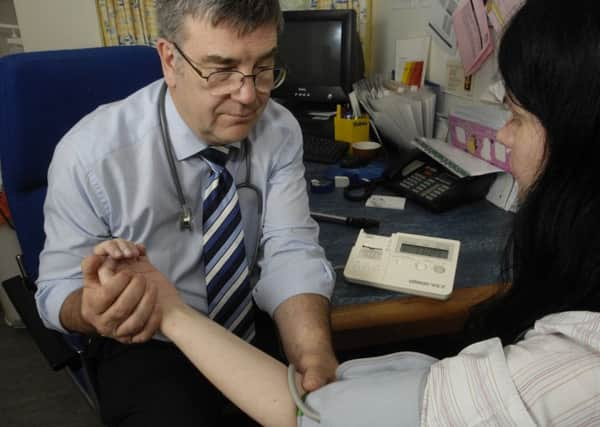Scottish GP vacancies surge as doctors face rising pressures


Almost a quarter of the GP practices responding to the survey also reported current GP vacancies, taking the vacancy rate from 1.7 per cent in 2013 to 5.6 per cent in 2017, the study said.
The British Medical Association warned that vacancies were putting more strain on a profession which already suffers from significant stress as a result of the demands put on family doctors.
Advertisement
Hide AdAdvertisement
Hide AdThe report, produced by ISD for the Scottish Government, stated that the estimated headcount of GPs working in general practice had changed “very little” over time. However, the estimated WTE of GPs has dropped from 3,735 in 2013 to 3,575 in 2017.
There has also been “a continued decrease” in the proportion of GPs working full-time – eight or more sessions per week – from 51 per cent in 2013 to 37 per cent last year.
“This decrease is occurring against a backdrop of increasing demand on GP services, with a continuing drive to shift from hospital to primary care and an ageing population,” the report said.
Nearly one in four (24 per cent) of responding GP practices reported current GP vacancies, compared to 22 per cent in 2015 and 9 per cent in 2013.
Advertisement
Hide AdAdvertisement
Hide AdAlmost nine out of ten practices reported using GP locums in the 12 months before the survey was carried out.
The WTE of registered nurses and healthcare support workers employed by general practice increased between 2013 and 2017, by 9 per cent and 33 per cent respectively.
Dr Alan McDevitt, chair of the British Medical Association’s (BMA’s) Scottish GP committee, said the vacancy figures showed that recruitment and retention problems continue to be an issue. “Every unfilled vacancy puts more and more strain on remaining GPs who must struggle to cover the gaps in their practice while also coping with rapidly increasing demands on GP services,” he said.
Health secretary Shona Robison said: “Primary care workforce levels in Scotland are now at a record high and it is especially encouraging to see the numbers of practice nurses have increased by almost 10 per cent and healthcare support workers by a third in the last five years.”